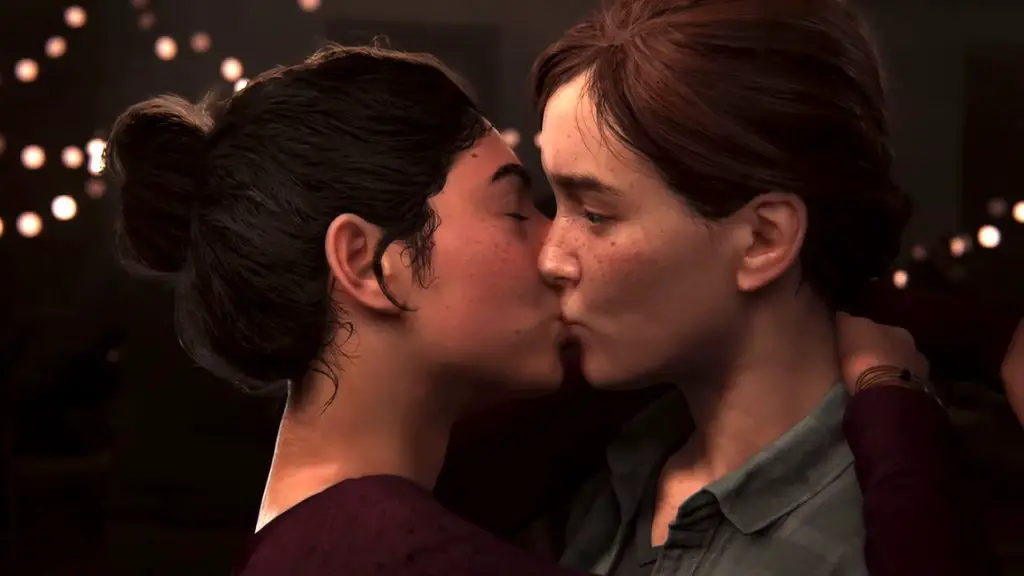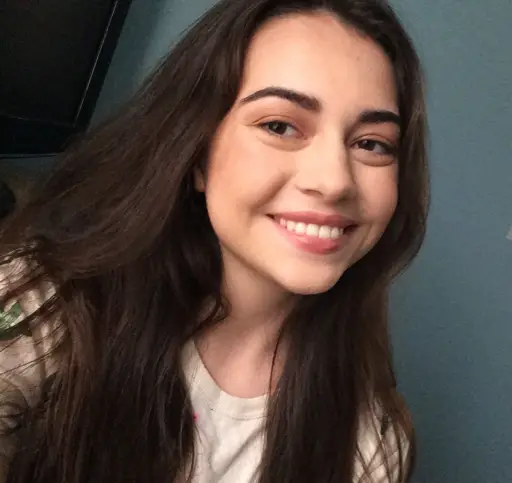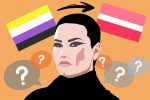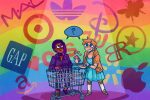At the E3 Sony conference on June 10, Naughty Dog released the latest trailer for the highly anticipated video game, “The Last of Us Part II.” The 12-minute video features the beloved character Ellie, now 19 years old, sharing a kiss with her female romantic interest. Although the romantic representation was a pleasant surprise, the LGBTQ community has reasons to question Naughty Dog’s intentions.
I was going to write a section here about the outrage surrounding Ellie’s sexuality, but to be honest, I could not find the reactions I was searching for. It seems as if the homophobes are keeping quiet this time around, or they have at least been placated by the amazing graphics and high levels of violence.
There are still one or two folks who are not sure what century it is, but the overwhelming majority of the internet has been blowing up with excitement and support for the new lesbian icon.
Ellie, portrayed by Ashley Johnson, shares her kiss with Dina, a new character played by “Westworld” actress Shannon Woodward. Dina is also of Middle-Eastern descent, with tan skin, dark eyes and frizzy hair.
Creative director Neil Druckmann pointed out that her curly locks were a challenge to light correctly, but his team wanted to succeed with even the smallest details of representation in “The Last of Us Part II.”
But will this representation even matter if the writers kill Dina off? Why bother introducing a new character with such fanfare, regardless of their sexuality, if they are not going to stick around for long?
Some people could argue that the first game is guilty of doing this, with Joel’s daughter dying within the first 15 minutes, but that situation is a little different. It’s like in “Finding Nemo,” when Nemo’s mother is killed by the barracuda in the opening minutes of the movie. The audience has barely gotten to know her, but it doesn’t really matter because the writers are simply establishing backstory — neither character was included in trailers or advertisements anyway.
Given that Ellie and Dina’s romantic relationship took center stage in the latest trailer, the clip would lead players to believe that Dina will be featured prominently in the “The Last of Us Part II.”
But the LGBTQ community has been let down before.
According to Riese, a writer for Autostraddle, a feminist website aimed at lesbian and bisexual women, the LGBTQ community has reason for suspicion. “Gay and lesbian characters are so often murdered on television that we have our very own trope: Bury Your Gays,” Riese wrote.
TV Tropes, a website devotes to cataloguing and defining media-related cliches, explains the term, saying, “Often … gay characters just aren’t allowed happy endings. Even if they do end up having some kind of relationship, at least one half of the couple … has to die at the end. … Additionally, the problem isn’t merely that gay characters are killed off: the problem is the tendency that gay characters are killed off in a story full of mostly straight characters, or when the characters are killed off because they are gay.”
The Autostraddle article then goes on to list all 198 regular or recurring lesbian or bisexual female characters killed on screen, and that’s only on TV.
If Naughty Dog does not intend to keep Dina around for long in “The Last of Us Part II,” then why would they tease the LGBTQ community with the possibility of a lesbian relationship that lasts longer than the 12 minutes of the trailer? What are their intentions? Does Naughty Dog just want to be “hip” with the liberal crowd and ride the Pride Month high like so many other companies?
Brands during Pride pic.twitter.com/y4WQP56G14
— Shiro Sirius (@ShiroSirius) June 29, 2017
It is encouraging to see more and more companies increasingly embracing pride, but which advertisements are genuine and which are just taking advantage of a marketing opportunity? Last year, Puma released the Clyde Pride Pack, which included a $95 pair of rainbow sneakers. As cool as they look, none of the profits went to an awareness campaign or LGBTQ charity. Puma’s efforts are appreciated, but would be even more so if the brand backed up the message with action.
In fact, Puma could stand to take a page from Levi’s book. The San Francisco-based company began its fight against HIV and AIDS in 1982 and has since contributed over $70 million to HIV/AIDS organizations.
Then there are the hypocrites. Topshop decked out its Oxford Street flagship in London with rainbows in June 2017. Five months later, it refused trans activist Travis Alabanza from entering a female changing room. The company has since announced gender-neutral changing rooms, but it’s too little too late.
Given the meticulous attention to detail Druckmann and his team put into ensuring Dina’s ethnic hair was lighted properly, you can infer that Naughty Dog is more like Levi’s than Puma or Topshop. Some fans were offended when Naughty Dog released DLC in 2014 that gave the first indication of Ellie’s homosexuality, but Druckmann responded with this tweet:
For each one of these bigoted & sad posts I get 1000s of positive ones from amazing fans. Both kinds inspire greater diversity in our games. pic.twitter.com/lSLgPzecbs
— Neil Druckmann (@Neil_Druckmann) July 10, 2017
Other clues to Dina’s longevity in “The Last of Us Part II” involve her bracelet. She is seen wearing it during the festival, but zoomed-in screenshots reveal that Ellie is wearing the same bracelet when she is violently murdering her attackers.
This could indicate that Ellie is wearing it as a memorial and is now avenging the death of Dina, but Druckmann has confirmed one fan’s observation that the bracelet is a hamsa. According to the fan, a hamsa is “a ubiquitous symbol in the Middle East that often appears on jewelry and household items. It symbolizes the hand of G-d, a sign of protection, luck, fortune, etc., wards away evil.”
If it is meant for good luck, then the bracelet could have just been a gift from Dina to protect Ellie on her dangerous quest.
It is expected that people will die in a zombie apocalypse, but with so few LGBTQ characters already, can the community really spare another one? The inclusion of Dina, a Jewish lesbian, is a step forward for equal representation in video games, and Druckmann’s advocacy for LGBTQ and diversity gives the community hope that, for once, this same-sex relationship will have a happy ending.

















